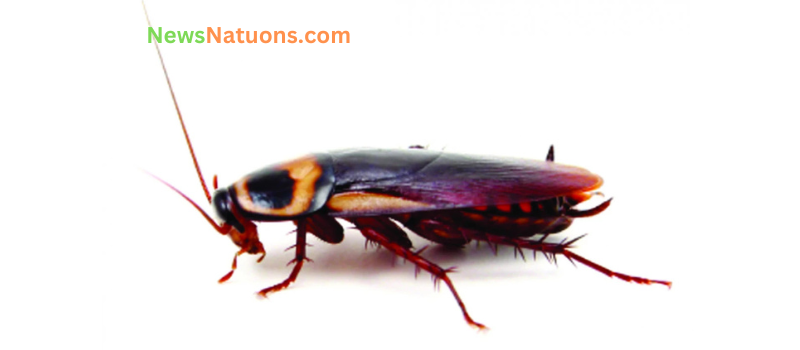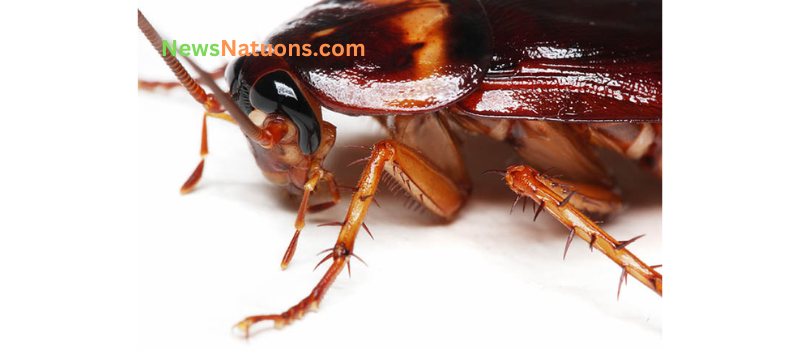It may sound unbelievable, but it is absolutely true. There exists a living creature on Earth that can survive for an entire week even after losing its head. This fascinating fact has surprised many and sparked the curiosity of scientists and laypeople alike. The creature in question is none other than the common cockroach.
The Cockroach’s Surprising Ability
Yes, cockroaches can stay alive for several days—even up to a week—without their heads. As astonishing as this may seem, there are scientific reasons behind this bizarre ability. Cockroaches possess unique biological systems that make this possible, and understanding how they function reveals just how different they are from humans and other animals.
Why Cockroaches Don’t Die Immediately
One of the primary reasons cockroaches survive without their heads is that they do not rely on blood pressure like humans do. Cockroaches have an open circulatory system, meaning their blood is not pumped through veins in a pressurized system. When their head is cut off, they don’t bleed out in the way humans would. This allows their bodies to continue functioning for a while even after such a traumatic injury.
Another critical factor is their respiratory system. Unlike humans who breathe through the nose and mouth, cockroaches breathe through tiny holes called spiracles located along the sides of their bodies. These spiracles allow oxygen to flow directly into the body. Because of this, a cockroach can continue breathing even without a head.
The Role of the Nervous System
Cockroaches also don’t rely heavily on their brains for basic survival. Their nervous systems are relatively simple and decentralized. They have nerve clusters, or ganglia, in various parts of their bodies that control basic motor functions. Even without a brain, these clusters can continue to send signals to their legs, allowing headless cockroaches to move around for days.
The ganglia located in the thorax can handle reflexes and some motor responses independently of the brain. This means that even if the cockroach loses its head, its body still retains enough control to function—at least temporarily.
Why the Cockroach Eventually Dies
Despite these extraordinary adaptations, cockroaches do eventually die after losing their heads. The primary reason is dehydration and starvation. Without a head, the cockroach can no longer eat or drink. It cannot consume water or food, which means that over time, the body begins to shut down due to lack of nutrients and hydration. Usually, this process takes about a week, after which the cockroach finally dies—not from the injury itself, but from the lack of sustenance.
Nature’s Bizarre Survivor
The cockroach’s ability to live without its head is a fascinating example of how nature equips creatures in ways that defy human expectations. While the thought may be unsettling, it also highlights how diverse and resilient life on Earth can be. The next time you see a cockroach, you might look at it a little differently—perhaps with a mix of awe and discomfort—knowing just how tough this tiny survivor really is.
یہ سن کر شاید آپ کو حیرت ہو لیکن یہ حقیقت ہے کہ دنیا میں ایک ایسا جاندار بھی پایا جاتا ہے جو اپنا سر کٹنے کے بعد بھی ایک ہفتے تک زندہ رہ سکتا ہے۔ یہ جاندار عام طور پر ہمارے گھروں میں نظر آنے والا کاکروچ ہے۔ جی ہاں! کاکروچ سر کے بغیر کئی دنوں تک زندہ رہنے کی صلاحیت رکھتا ہے اور اس کی سائنسی وجوہات نہایت دلچسپ اور حیران کن ہیں۔
کاکروچ سر کے بغیر زندہ کیسے رہتا ہے؟
کاکروچ کا جسم انسانوں سے بالکل مختلف طریقے سے کام کرتا ہے۔ سب سے اہم بات یہ ہے کہ کاکروچ کے جسم میں خون کا دباؤ (بلڈ پریشر) نہیں ہوتا۔ انسانوں میں اگر سر کٹ جائے تو خون کا بہاؤ رکنے کی وجہ سے موت فوراً واقع ہو جاتی ہے، لیکن کاکروچ کے خون کا نظام “اوپن سرکولیٹری سسٹم” ہوتا ہے۔ اس میں خون رگوں کے ذریعے نہیں بہتا بلکہ جسم میں کھلا ہوتا ہے، اس لیے سر کٹنے پر وہ فوراً نہیں مرتا۔
سانس لینے کا منفرد نظام
کاکروچ کا سانس لینے کا نظام بھی منفرد ہوتا ہے۔ وہ نہ تو ناک سے سانس لیتا ہے اور نہ منہ سے، بلکہ اس کے جسم کے اطراف میں موجود چھوٹے چھوٹے سوراخ، جنہیں “اسپائریکلز” کہا جاتا ہے، ان کے ذریعے آکسیجن حاصل کرتا ہے۔ یہی وجہ ہے کہ جب سر کٹ بھی جائے تو جسم خود ہی آکسیجن لیتا رہتا ہے اور کاکروچ زندہ رہتا ہے۔
دماغ کی کم ضرورت

کاکروچ کے اعصابی نظام (نروس سسٹم) کی بناوٹ بھی بہت سادہ ہوتی ہے۔ اس کے جسم میں مختلف حصوں میں نرو کلسترز (گانگلیا) موجود ہوتے ہیں، جو گردن کے نیچے بھی پائے جاتے ہیں۔ یہ گینگلیا جسم کو سر کے بغیر بھی کچھ افعال سرانجام دینے کے قابل بناتے ہیں، جیسے حرکت کرنا۔
پھر کاکروچ مرتا کیوں ہے؟
جب کاکروچ کا سر کٹتا ہے تو وہ کھانے یا پانی پینے کے قابل نہیں رہتا۔ اسی وجہ سے وہ کچھ دنوں بعد بھوک یا پانی کی کمی (ڈی ہائیڈریشن) سے مر جاتا ہے۔ عام طور پر یہ عمل سات دن کے اندر مکمل ہوتا ہے۔ یعنی کاکروچ فوری طور پر نہیں مرتا بلکہ خوراک اور پانی نہ ملنے کی وجہ سے اس کی موت واقع ہوتی ہے۔
قدرت کا ایک حیران کن راز
کاکروچ کا بغیر سر کے زندہ رہنا بظاہر ڈراؤنا اور عجیب لگتا ہے لیکن یہ قدرت کے ان رازوں میں سے ایک ہے جو انسانی فہم سے بالاتر ہیں۔ اس چھوٹے سے جاندار کی یہ حیران کن صلاحیت ہمیں بتاتی ہے کہ فطرت نے ہر مخلوق کو کس قدر منفرد انداز میں بنایا ہے۔ اب جب آپ اگلی بار کاکروچ دیکھیں تو شاید آپ اسے نئی نظر سے دیکھیں گے — ایک ایسے جاندار کے طور پر جو غیر معمولی حد تک سخت جان ہے۔











